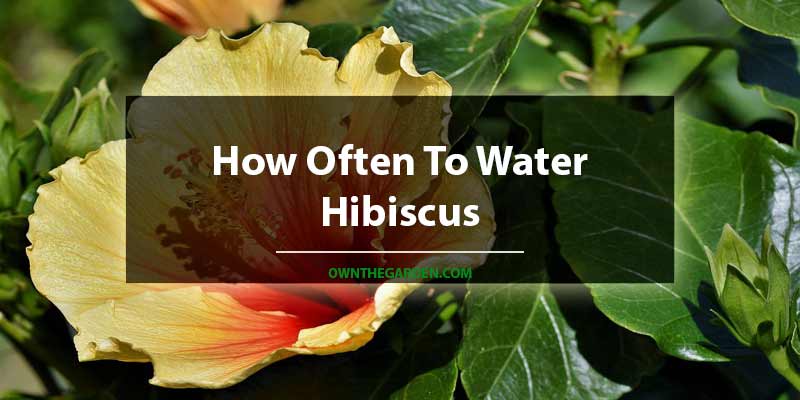Hibiscus is a beautiful flowering plant that can be kept indoors or outdoors. These plants are naturally drought-resistant and do not require watering every day. Watering your hibiscus every few days will keep it healthy, but if you find yourself forgetting to water, here are some tips and tricks on how to tell when your plant needs water and how much water it needs.
How Often To Water Hibiscus
How often to water hibiscus depends on a few things: the plant’s size and its soil.
If you’re planting a new hibiscus, it’s important to water it well at first. Pour water into the hole in the pot, then wait until it starts draining out again before watering again. Once this happens, you should be able to water your hibiscus every two to three days, or whenever the top inch of soil is dry.
If you already have an established hibiscus, check the soil before you water it. If it feels moist but not soggy, you can probably go another day or two before watering again. However, if your soil feels dry and crumbly when you poke around in it with your finger, it’s time for a drink!
How to Tell it’s Time to Water Your Hibiscus
If you’re a hibiscus lover, you know that they’re beautiful plants that require little maintenance, but they do need to be watered. If you’ve been wondering when the right time is to water your hibiscus, we’ve got the answers for you!
Here are some of our favorite tips for telling it’s time to water your hibiscus:
1. Check for dryness in the soil. You can do this by sticking a finger into the soil and feeling how wet it is. If it feels dry, then it’s time to water.
2. Look at the leaves of your plant. If they start to curl up or droop down, then it’s time to water.
3. Check for dull colors on the leaves—if they look more yellow than greenish colors then it may be time for a drink!
How to Water Hibiscus
The best way to water hibiscus is to use a watering can. Water the plant with a gentle hand, and don’t let it get overwatered or underwater. In general, it’s best to water your hibiscus at the same time each day—for example, every morning or evening—to keep them on a schedule and make sure they’re getting everything they need without overdoing it.
Drip irrigation systems are one way you can help keep your plants alive through drought cycles that may occur during the winter months when little rain falls in many regions of the United States. Drip irrigation works by delivering small amounts of water directly where it’s needed most by putting holes in lines so that only those areas get watered instead of flooding everything with too much moisture all at once! Be sure not to overwater though because this could lead to root rot.
Signs of Excessive Hibiscus Watering
Hibiscus is a beautiful flower, but it can be tricky to keep alive. If you’re having trouble with your hibiscus plant, here are some signs that might mean you’re overwatering it.
1. The leaves are droopy and falling off
2. The stem is soft and mushy at the base
3. The soil is soggy or caked in mud
4. The roots are brown or slimy
How Much Water Does Hibiscus Need?
The amount of water your hibiscus needs depends on the temperature and the soil. If you live in an area with hot and humid summers, your plant may need more water than if you live in a colder region.
You’ll know it’s time to check how much water your hibiscus needs when the soil feels dry about 2 inches below its surface. If it feels damp all the way through, then don’t worry about watering yet; leave it alone until you need to next check again.
If you’re not sure whether or not to give this plant some attention right away, try sticking your finger down into the dirt: if there is still moisture at a depth of 2 inches (5 cm), then no watering is necessary just yet.
However, if there isn’t much moisture present at all—or worse yet—if there’s absolutely none after digging down deep enough into this potting mix containing peat moss and perlite along with other natural ingredients such as composted bark chips…then yes!
It’s time for some watering! In general though: keep track of what type of soil mix has been chosen because different types will require different amounts of moisture depending upon the location.
Conclusion
While it’s true that hibiscus plants are tropical plants, they do not need to be watered every day. In fact, overwatering can cause root rot or other plant diseases. Water your hibiscus twice a week, even if the soil feels dry. This will keep your plant healthy and happy!


